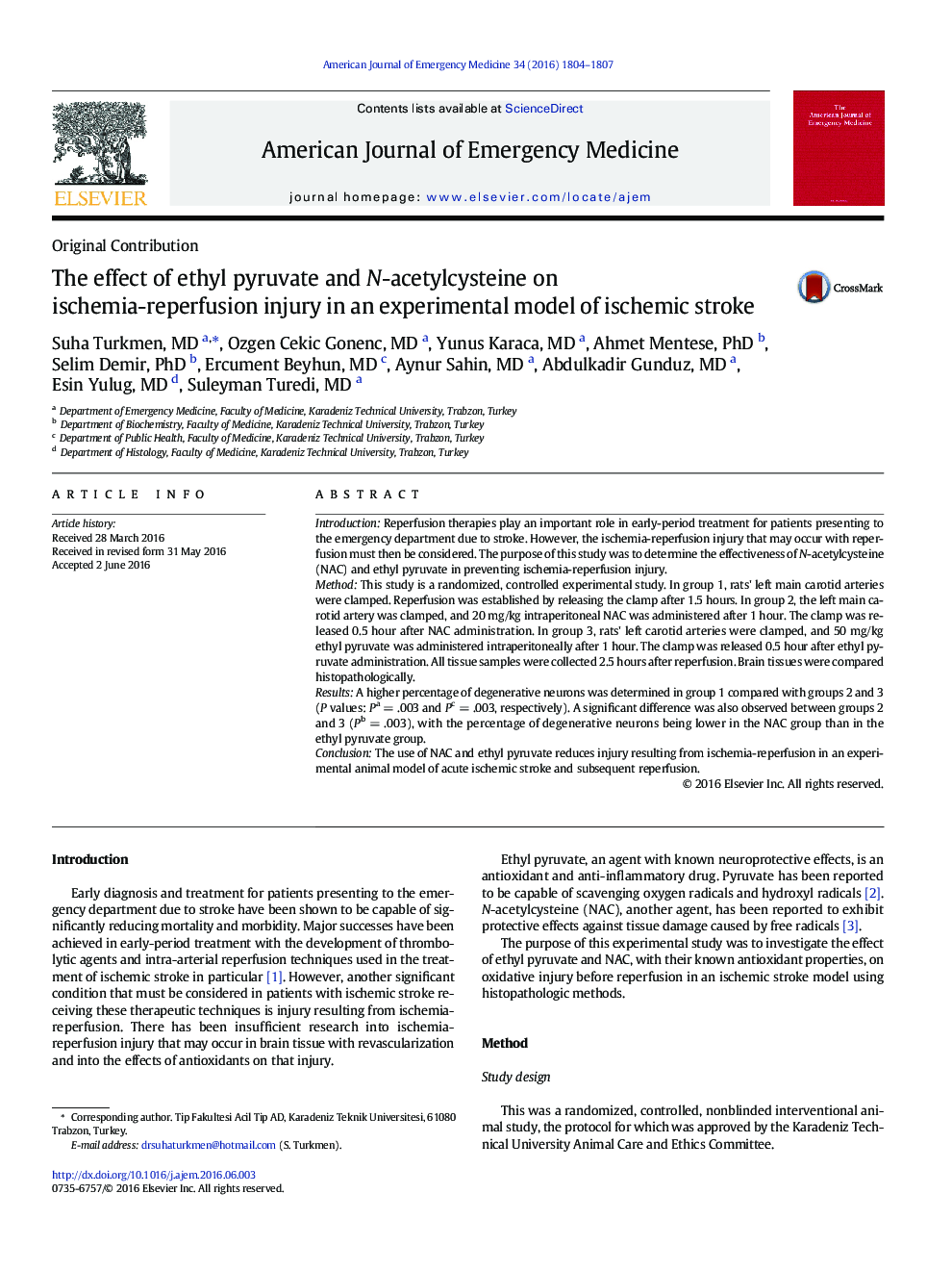| Article ID | Journal | Published Year | Pages | File Type |
|---|---|---|---|---|
| 3223028 | The American Journal of Emergency Medicine | 2016 | 4 Pages |
IntroductionReperfusion therapies play an important role in early-period treatment for patients presenting to the emergency department due to stroke. However, the ischemia-reperfusion injury that may occur with reperfusion must then be considered. The purpose of this study was to determine the effectiveness of N-acetylcysteine (NAC) and ethyl pyruvate in preventing ischemia-reperfusion injury.MethodThis study is a randomized, controlled experimental study. In group 1, rats' left main carotid arteries were clamped. Reperfusion was established by releasing the clamp after 1.5 hours. In group 2, the left main carotid artery was clamped, and 20 mg/kg intraperitoneal NAC was administered after 1 hour. The clamp was released 0.5 hour after NAC administration. In group 3, rats' left carotid arteries were clamped, and 50 mg/kg ethyl pyruvate was administered intraperitoneally after 1 hour. The clamp was released 0.5 hour after ethyl pyruvate administration. All tissue samples were collected 2.5 hours after reperfusion. Brain tissues were compared histopathologically.ResultsA higher percentage of degenerative neurons was determined in group 1 compared with groups 2 and 3 (P values: Pa = .003 and Pc = .003, respectively). A significant difference was also observed between groups 2 and 3 (Pb = .003), with the percentage of degenerative neurons being lower in the NAC group than in the ethyl pyruvate group.ConclusionThe use of NAC and ethyl pyruvate reduces injury resulting from ischemia-reperfusion in an experimental animal model of acute ischemic stroke and subsequent reperfusion.
